Welcome to the official website for the Buffalo Oromotor, Speech and Swallowing (BOSS) Lab of the University at Buffalo!

Our lab explores how the brain controls the muscles of speech and swallowing, as well as the perceptual, acoustic, kinematic, and neurophysiologic effects of neurological disease and injury on these functions. We are dedicated to improving the measurement of key clinical outcomes, such as speech intelligibility, to advance patient care and enhance treatment for individuals with oromotor impairments.
What is Speech?
“Speech is how we say sounds and words. Speech includes articulation, voice, and fluency. Articulation is how we make speech sounds using the mouth, lips, and tongue. Voice is how we use our vocal folds and breath to make sounds. Our voice can be loud or soft or high- or low-pitched. We can hurt our voice by talking too much, yelling, or coughing a lot. Fluency is the rhythm of our speech. We sometimes repeat sounds or pause while talking.”
~ American Speech and Language Association (ASHA)
What is Swallowing?
“Think about how you eat. First you have to get the food or drink to your mouth. You may use a fork, spoon, straw, or your hands. Next, you have to open your mouth and put the food in. You close your lips to keep the food in your mouth. Then, you chew the food or move the liquid to get ready to swallow. We all have problems swallowing sometimes. We may gag on food or have to swallow hard to get it down. And we have all had a drink “go down the wrong way,” making us cough and choke. A person with a swallowing disorder will have trouble like this a lot of the time. A swallowing disorder is also called dysphagia”
~ American Speech and Language Association (ASHA)
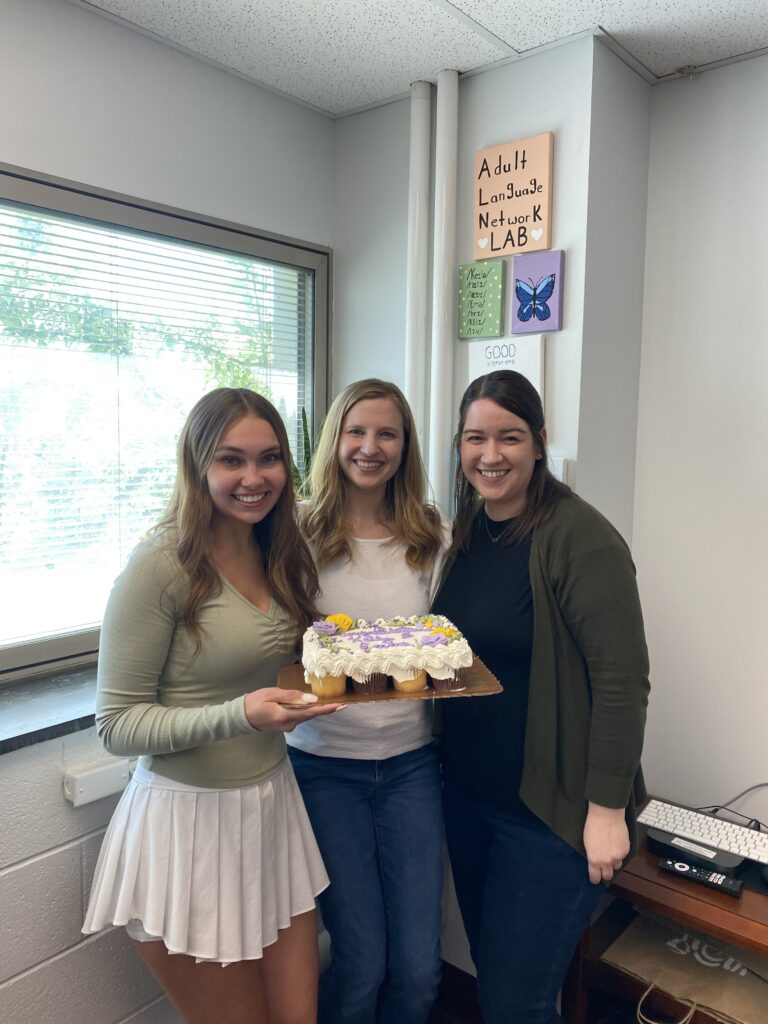
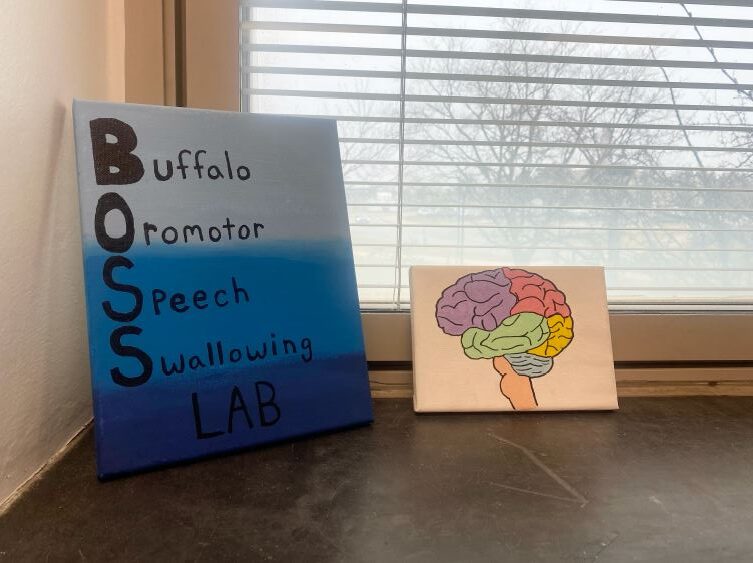

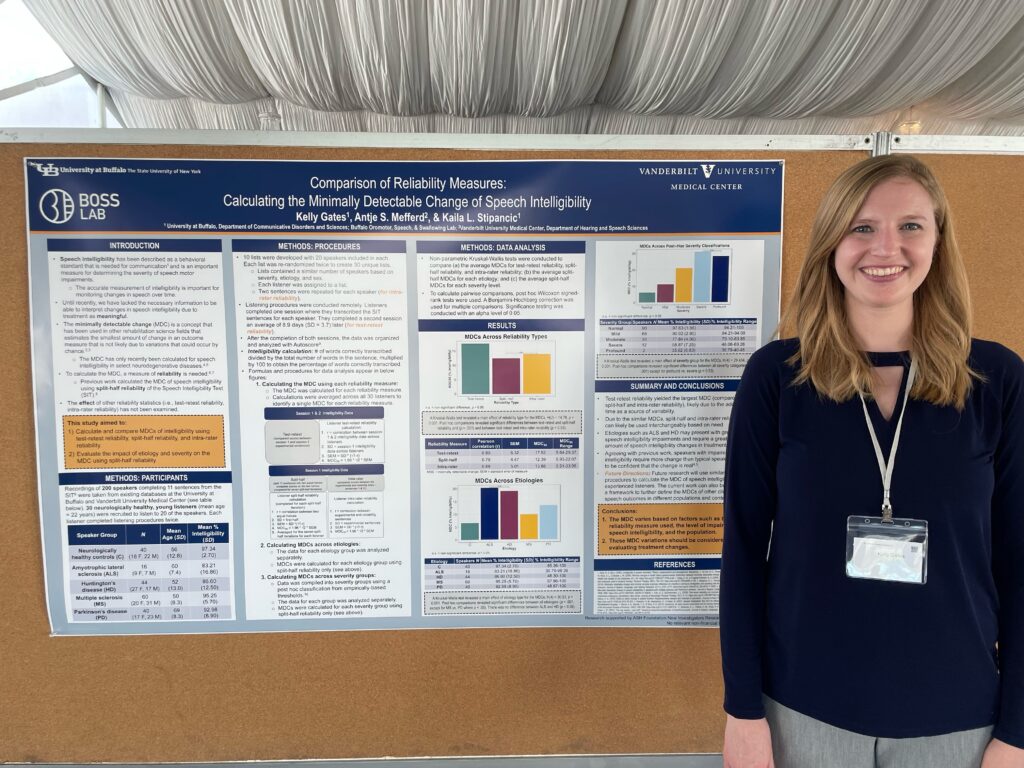
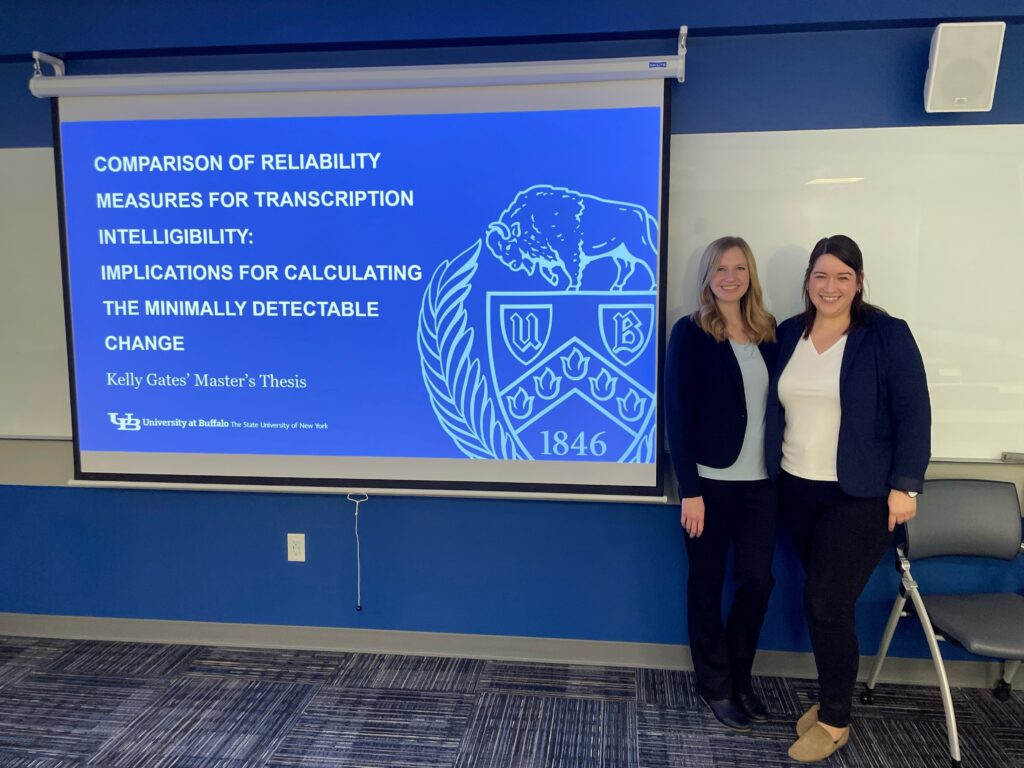
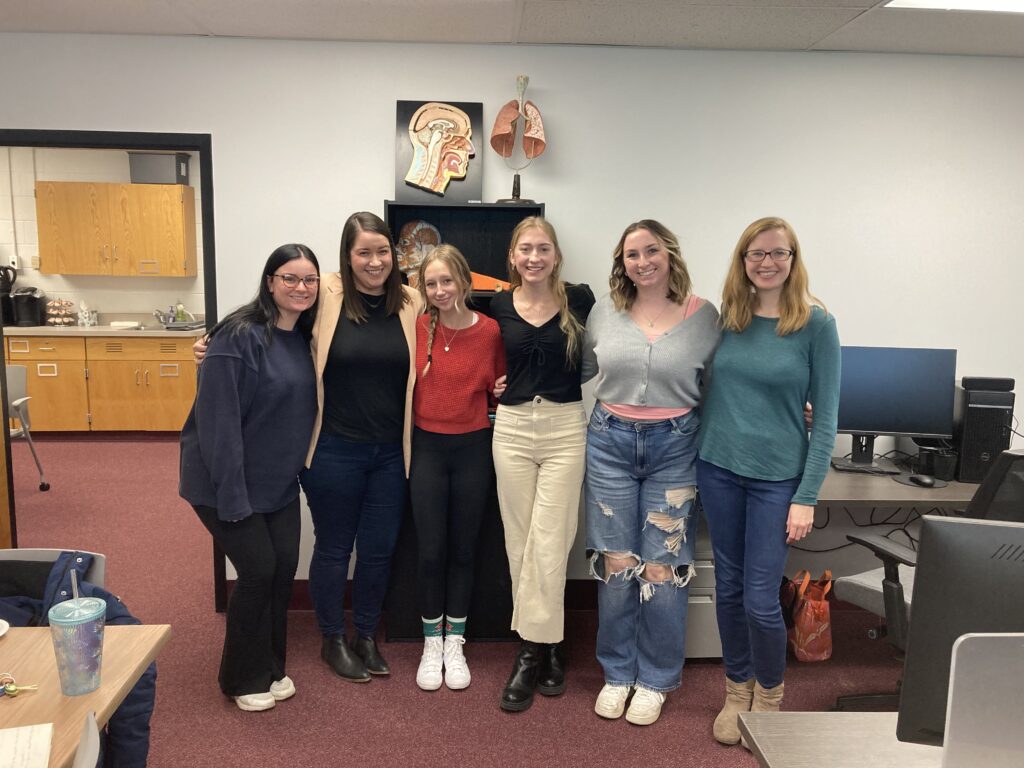
Left to right: Olivia Stout, Professor Kaila Stipancic, Brianna Odrzywolski, Rylee Manning, Abigail Makofske, Kelly Gates, Emma Fitch (not pictured)
